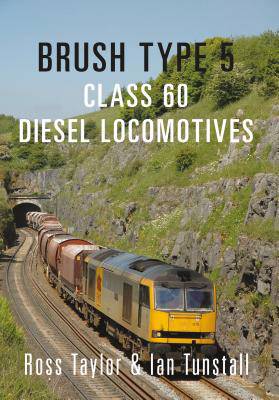
- Afhalen na 1 uur in een winkel met voorraad
- Gratis thuislevering in België vanaf € 30
- Ruim aanbod met 7 miljoen producten
- Afhalen na 1 uur in een winkel met voorraad
- Gratis thuislevering in België vanaf € 30
- Ruim aanbod met 7 miljoen producten
Zoeken
€ 22,45
+ 44 punten
Omschrijving
After being built in and around 1989, the Class 60 diesel locomotives were built for heavy goods trains mainly used on Class 6 or 7 workings. Nicknamed 'Tugs' by rail enthusiasts, there were 100 of the class made, and these were split down into sectors such as coal, petroleum, metals and construction, but by the time the class entered service, the decals often didn't match the operating department. Now run by two companies - DB Schenker and Colas Rail Freight - less than fifty are active and in working order. With the cost of around £120 million to complete all 100 locomotives, the first of the class was sent to Derby for testing in June 1989, where a few teething problems were found. Having an eight-cylinder, 145-litre Mirrlees Blackstone 8MB275T diesel traction engine and being one of the most fuel-efficient engines available at the time, the class was introduced onto the main line in 1990 and took over from several classes such as the 20, 26, 27, 31 and diesel electric 73. The Class 60s are still proving to be one of, if not the best diesel locomotives around for reliability and power. Using their excellent collections of photographs, Ross Taylor and Ian Tunstall explore this fascinating class.
Specificaties
Betrokkenen
- Auteur(s):
- Uitgeverij:
Inhoud
- Aantal bladzijden:
- 96
- Taal:
- Engels
Eigenschappen
- Productcode (EAN):
- 9781445655000
- Verschijningsdatum:
- 15/05/2016
- Uitvoering:
- Paperback
- Formaat:
- Trade paperback (VS)
- Afmetingen:
- 165 mm x 234 mm
- Gewicht:
- 303 g

Alleen bij Standaard Boekhandel
+ 44 punten op je klantenkaart van Standaard Boekhandel
Beoordelingen
We publiceren alleen reviews die voldoen aan de voorwaarden voor reviews. Bekijk onze voorwaarden voor reviews.











